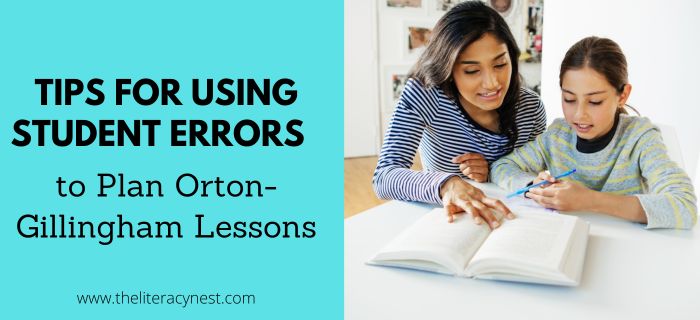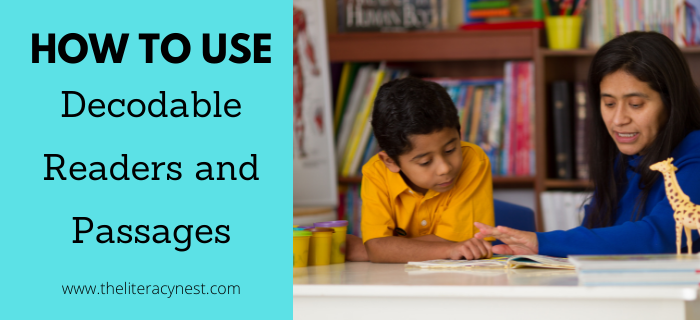Interleaving Strategy in Orton-Gillingham Lessons
Have you ever noticed your students remembering something one day, only to forget it the next? Or, a student masters a concept in isolation but can’t apply it later? If so, it may be time to bring the interleaving strategy into your Orton-Gillingham lesson planning. Luckily, I have the full breakdown of how and when to apply the interleaving strategy below.
What Is Interleaving?
Interleaving is an evidence-based learning strategy that involves mixing different skills into one single lesson. So, instead of teaching or reviewing one skill in a large blocked practice, the interleaving strategy encourages weaves in previously learned skills alongside new concepts.
This helps students keep older skills fresh while learning new ones. For example, in an Orton-Gillingham lesson students may review older phonics patterns while learning new ones. Furthermore, if you are teaching the vowel team “oa”, you would mix in reviews of earlier learned vowel teams “ai” or “ee”.
During blending drills or dictation, you might include words like boat, train, seed, and cat. Using the interleaving strategy, students will become more flexible readers and spellers. Students will become used to switching between patterns and applying what they’ve already learned. This is exactly what real-life reading and writing looks like!
You can learn more about the pathways that increase the transfer of learning including the interleaving strategy in this podcast episode.
Interleaving Strategy vs. Blocked Practice
As teachers, we know that the way structure practice matters. Many teachers use blocked practice, where students focus on one skill at a time. However, research shows that the interleaving strategy of mixing related skills together, can lead to deeper understanding. Therefore, students will have stronger retention. Here’s a quick comparison to show the difference between the two:
| Blocked Practice | Interleaving Strategy |
| Practice one skill at a time (e.g., just short vowels) | Mix multiple related skills (e.g., short vowels + digraphs + closed syllables) |
| Students get fast at one skill during practice | Students develop deeper, longer-lasting retention |
| Easier in the short term | More effortful, but better for long-term learning |
Why Interleaving Works in OG Lessons
Orton-Gillingham teachers do a great job of adjusting instruction to meet students’ needs. Interleaving helps reinforce older concepts while teaching new ones. Consequently, this aligns beautifully with OG’s spiral review and cumulative instruction.
Students with dyslexia often struggle with generalization. The interleaving strategy supports them in transferring learning to new situations by forcing them to think about which strategy to use and when.
How To Use the Interleaving Strategy in OG Lessons
Interleaving doesn’t mean chaos. It just means planning intentional, structured review within your lesson. Here’s how you can do it:
Phonogram Review
Instead of only reviewing today’s phonogram, include 1–2 older ones.
Example:
You’re introducing -dge. Include a quick review of -ck, -tch, and -ge in your phonogram drill. Ask students to sort or compare them.
Blending Practice
Choose word cards that reflect a range of previously learned patterns, not just the new one.
Example:
If you’re teaching long a (ai/ay), throw in words with short a, digraphs, and even R-controlled vowels to keep students making comparisons.
Reading Words in Mixed Patterns
Use interleaved word lists during decoding or reading practice.
Example:
Instead of all ai words, create a list like:
train – batch – shape – trick – gray – plane – stack – chain
Dictation
Use interleaved sentences and words during the written portion of your lesson.
Example:
Dictate a sentence that includes a new phonogram and older ones.
The rich witch baked a cake on the tray.
This mixes -ch, -tch, a-e, and ay.
Games and Review Activities
Design board games, sorts, or card games that require students to toggle between phonics rules and spelling generalizations.
Example:
Make a review game where each card requires identifying whether a word uses ge or dge, or k or ck. Interleave the rules and give students clues to explain why a spelling was used.
Decodable Readers Bundle
Want an easy way to work the interleaving strategy into your reading lessons? The Orton-Gillingham Decodable Readers Bundle can help. It includes over 60 decodable readers that build on phonics skills your students have already learned.
That means they keep practicing old skills while learning new ones. Each story is short, engaging, and perfect for small group work or extra decoding practice. If you’re looking for no-prep materials that actually support your OG lessons, these are a great fit. Your students will get more confident with every book they read.
Tips for the Interleaving Strategy
• Plan ahead. Use a lesson planner that includes space to add spiral review.
• Make it cumulative. Keep track of what students have learned, and revisit those items regularly.
• Model your thinking. Say things like: “We’ve seen both -ck and -k. Let’s think about when to use each one.”
• Vary your practice activities. Use a mix of visual, auditory, and kinesthetic strategies.
• Give feedback. Help students understand why an answer is correct, especially when applying an older skill.
Many teachers fall back into blocked practice because they are nervous students may feel overwhelmed with interleaving. However, Interleaving isn’t about overwhelming your students with too much at once. Instead, it helps build stronger connections and develop mastery that sticks.
By using the interleaving strategy in Orton-Gillingham lessons you’re helping your students become flexible and confident decoders and spellers.
Want more tips and strategies to boost literacy?
Join The Literacy Nest Email List to stay in the loop and get a 15% off coupon to The Literacy Nest store! Make sure to save this blog post to your favorite literacy Pinterest board. You will be able to come back to it when you are ready to incorporate the interleaving strategy.






